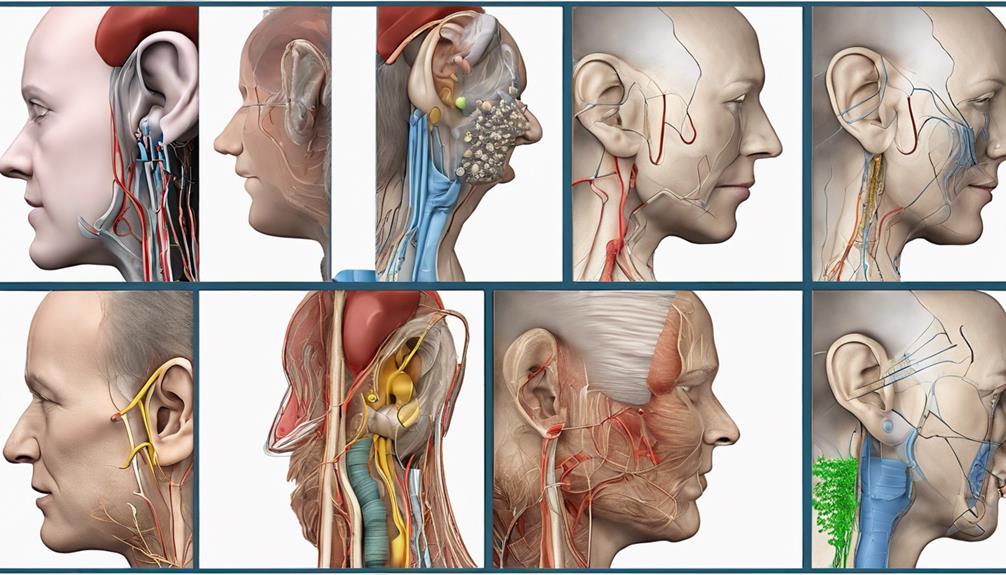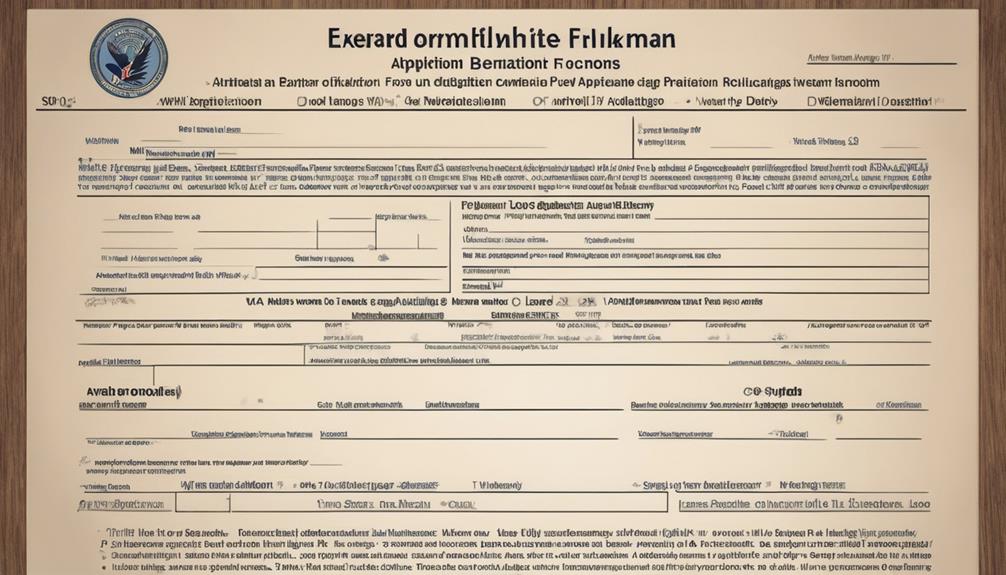Out of every ten veterans, one experiences hearing loss, underscoring the importance of this common issue when considering VA Disability Ratings for Hearing Loss.
As we aim to navigate the complexities of this system, it's crucial to comprehend how these ratings are determined and what they mean for veterans' benefits and care.
By unraveling the intricacies of VA disability ratings for hearing loss, we can empower veterans to make informed decisions about their health and well-being.
Key Takeaways
- VA Disability Ratings range from 0 to 100% based on severity of hearing loss.
- Different types of hearing loss, like sensorineural or conductive, are recognized.
- VA Hearing Loss Evaluation includes specific tests to determine impairment level.
- Strengthen VA benefits application with medical records, statements, and support from family or coworkers.
VA Disability Rating Basics
When assessing VA disability ratings for hearing loss, it's crucial to understand that these ratings range from 0 to 100 percent based on the severity of the condition. The VA considers various factors when determining the percentage of disability, such as the results of auditory tests conducted without hearing aids. These ratings not only establish the level of impairment but also dictate eligibility for cash benefits and treatment for hearing loss.
It's important to note that the VA provides separate ratings for hearing loss and tinnitus, recognizing the unique challenges each condition presents. Additionally, individuals experiencing deafness in both ears may qualify for Special Compensation from the VA due to the heightened impact on daily life and communication.
Understanding the nuances of VA disability ratings for hearing loss is essential for veterans seeking assistance and support. By comprehending how these ratings are determined and the potential benefits they unlock, individuals can navigate the process more effectively and access the resources they need for managing their condition.
Types of Hearing Loss

Recognizing various forms of hearing impairment is crucial in understanding the impact on veterans' disability ratings, with the VA acknowledging sensorineural, conductive, and mixed types of hearing loss.
Sensorineural hearing loss often stems from inner ear or nerve damage, affecting the transmission of sound signals to the brain.
On the other hand, conductive hearing loss occurs due to obstacles in the outer or middle ear, obstructing sound waves from reaching the inner ear.
Mixed hearing loss combines elements of both sensorineural and conductive hearing loss, presenting challenges in both signal transmission and sound conduction.
Veterans exposed to blast injuries or trauma may experience any of these types of hearing loss recognized by the VA, emphasizing the need for accurate diagnosis and appropriate management strategies.
Understanding these distinctions is essential for healthcare providers and evaluators working with veterans to ensure proper assessment and support for their hearing impairments.
VA Hearing Loss Evaluation Process
The VA Hearing Loss Evaluation Process involves conducting Compensation and Pension exams that include speech discrimination and puretone audiometry tests. These evaluations are crucial in determining the severity of hearing loss and the impact it has on daily functioning. Here is a breakdown of the process:
- Compensation and Pension Exams: These exams are comprehensive assessments conducted by VA healthcare professionals to evaluate the extent of hearing loss.
- Speech Discrimination Test: This test measures the ability to understand speech in noisy environments and is essential in determining the impact of hearing loss on communication.
- Puretone Audiometry Test: This test helps quantify the degree of hearing loss across different frequencies, providing valuable information for assigning disability ratings.
- VA Rating Schedule: The VA uses a rating schedule to assign disability ratings based on the test results, ensuring consistency in evaluating hearing loss disabilities.
Applying for VA Hearing Loss Benefits

To successfully apply for VA hearing loss benefits, individuals must gather and submit relevant medical records and documentation supporting their claim. When submitting your VA disability claim, ensure it includes detailed information about your military service and the impact of hearing loss on your daily life.
Include supporting evidence, such as statements from family members or coworkers, to strengthen your application. Whether you choose to submit your claim online, in person, or by mail, be thorough in providing all necessary information.
A VA representative will review your application, potentially schedule an exam, and determine your eligibility for VA disability benefits. Working closely with a qualified VA representative or attorney can help ensure a successful application process.
Maximizing Your VA Benefits
When aiming to maximize your VA benefits for hearing loss, it's crucial to provide comprehensive and accurate information regarding the impact of your condition and to collaborate with knowledgeable VA representatives or attorneys throughout the application process. To ensure you receive the maximum benefits you deserve, follow these key steps:
- Provide Thorough Information: Detail the extent of your hearing loss, its effects on your daily life, and any related conditions to support your claim effectively.
- Follow Treatment Plans: Adhere to recommended treatment plans for your hearing loss as it demonstrates your commitment to managing your condition and can strengthen your VA application.
- Include Supporting Evidence: Incorporate additional evidence like statements from family members or coworkers who've witnessed the impact of your hearing loss to bolster your case.
- Work with Experts: Seek guidance from qualified VA representatives or attorneys who specialize in VA claims to navigate the process smoothly and increase your chances of receiving maximum benefits.
Frequently Asked Questions
How Does VA Determine Disability Rating for Hearing Loss?
We determine disability ratings for hearing loss by analyzing auditory test results like puretone audiometry and speech discrimination. These ratings, ranging from 0 to 100 percent, reflect the severity of hearing impairment, with higher ratings indicating more significant issues. Our process involves reviewing medical records, test outcomes, and the impact on daily functioning to assign an appropriate rating.
Veterans undergo evaluations without hearing aids to accurately assess their level of hearing impairment for rating purposes.
Is 30% Hearing Loss a Disability?
Absolutely, a 30% hearing loss is considered a disability by the VA. This level of impairment can significantly impact daily life, making communication in noisy environments challenging and potentially necessitating the use of hearing aids.
Social interactions and work performance may be affected as well. Veterans with a 30% hearing loss rating are eligible for disability compensation to help address these difficulties and provide support for their needs.
How Do You Calculate Hearing Loss Disability?
When calculating hearing loss disability, we consider audiometry test results at specific frequencies, like 1000, 2000, 3000, and 4000 Hertz, as well as Speech Discrimination Results.
The VA may note if the speech test wasn't proper. Payment amounts rely on these test results for each ear.
What Does 80% VA Disability Entitle You To?
At an 80% VA disability rating for hearing loss, we receive substantial benefits and compensation. This rating signifies significant hearing impairment, impacting communication and daily activities.
Monthly compensation is higher for veterans at this level, reflecting the challenges faced in understanding speech. The entitlements include support for the profound impact on our lives due to impaired hearing.
This rating acknowledges the extent of our disability and offers appropriate assistance and recognition.
Conclusion
In navigating the complex terrain of VA Disability Ratings for Hearing Loss, we must remember that our journey is like a symphony. Each test result, each evaluation, is a note in the melody of our benefits.
By understanding the nuances of our ratings, seeking proper guidance, and taking proactive steps to maximize our benefits, we can harmonize our way towards a brighter future.
Let's orchestrate our efforts towards the best possible outcomes.











